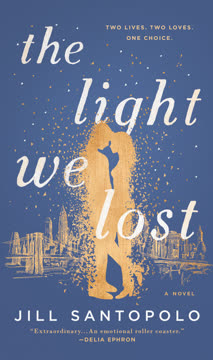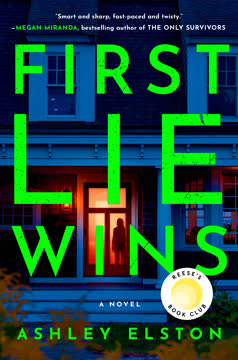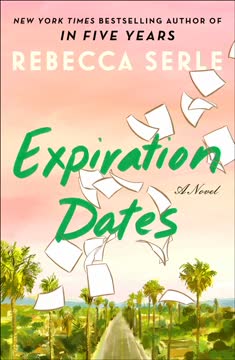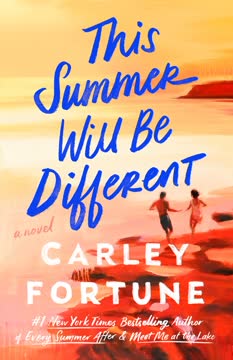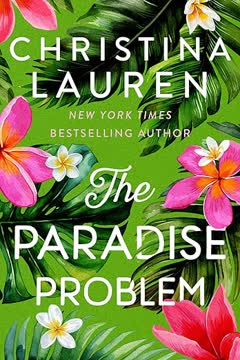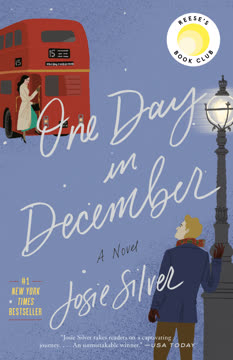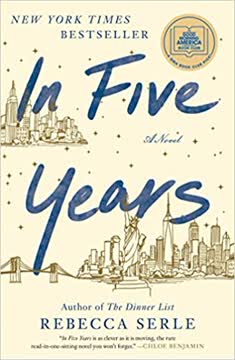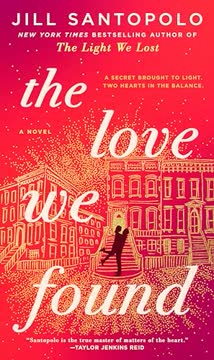Plot Summary
Smoke and Sunlight
Lucy and Gabe's story begins on September 11, 2001, in a Columbia University classroom, as the world outside is forever changed. Amidst chaos and fear, they find each other—two souls drawn together by the gravity of shared trauma and the need for comfort. Their first kiss, on a rooftop overlooking a city shrouded in smoke, is both a desperate grasp for life and the start of a connection that will shape them for years. The day's devastation forges an indelible bond, making their meeting feel fated, as if destiny itself had intervened. In the shadow of disaster, they discover the first glimmers of light in each other.
Aftermath and Attraction
In the days and weeks following 9/11, Lucy and Gabe's lives intertwine further. They share intimate conversations about art, purpose, and the meaning of a life well-lived. Gabe's passion for photography and Lucy's desire to make a difference through storytelling reveal their kindred spirits. Yet, the world's uncertainty mirrors their own: Gabe's unresolved relationship with his ex, Stephanie, and Lucy's struggle to find her place. Their attraction is magnetic, but timing and circumstance keep pulling them apart, leaving both longing for what might have been.
Choices in the Rubble
Gabe chooses to return to Stephanie, leaving Lucy heartbroken and adrift. The pain of missed opportunity lingers, coloring Lucy's memories of that pivotal day. As they drift apart, each tries to move forward—Lucy immerses herself in meaningful work, while Gabe seeks solace in art and fleeting connections. The city's wounds begin to heal, but the emotional scars between them remain. Their lives, once so closely aligned, now run parallel, haunted by the question of fate versus free will.
Reunions and Regrets
Nearly a year later, Lucy and Gabe's paths cross again at a bar on her birthday. The spark between them is undeniable, and this time, they give in to their desires. Their reunion is passionate and all-consuming, as if no time has passed. Yet, the ghosts of their past decisions linger, and both are wary of repeating old mistakes. They begin a relationship marked by intensity and vulnerability, each hoping that this time, love will be enough to overcome the obstacles ahead.
Love in the City
Lucy and Gabe's relationship flourishes in the vibrant chaos of New York. They share apartments, friends, and dreams, learning each other's histories and wounds. Gabe's troubled relationship with his father and Lucy's fears of losing herself in love add depth to their bond. Together, they create rituals and memories—picnics in the park, artistic projects, and passionate nights. Yet, beneath the surface, the tension between personal ambition and shared future simmers, threatening the fragile happiness they've built.
Dreams and Divergence
Gabe's calling as a photojournalist grows stronger, pulling him toward conflict zones and stories that matter. Lucy, meanwhile, finds fulfillment in her work creating children's television, shaping young minds. Their dreams, once aligned, now pull them in opposite directions. The prospect of separation looms, and both grapple with the sacrifices required for love and purpose. When Gabe is offered a job overseas, the couple faces an impossible choice: pursue individual destinies or cling to the life they've built together.
Living for Now
Knowing Gabe's departure is imminent, Lucy chooses to live in the present, savoring every moment. They move in together, creating a cocoon of intimacy and joy. Their love is fierce and urgent, colored by the knowledge that it cannot last. Friends and family warn Lucy of impending heartbreak, but she refuses to let fear dictate her choices. The couple's time together becomes a bittersweet countdown, each day a reminder of the light they share and the darkness that awaits.
The Art of Letting Go
Gabe leaves for the Middle East, chasing stories that will change the world. Lucy is left behind, her heart shattered but her resolve intact. She throws herself into work and friendships, trying to fill the void. Letters and emails between them become lifelines, but distance and danger erode their connection. Both struggle with loneliness and longing, haunted by memories of what they had. The pain of letting go is profound, but necessary for growth and survival.
Parallel Paths
As years pass, Lucy meets Darren, a stable and loving partner who offers her the security Gabe could not. Their relationship is built on comfort and shared goals, a hearth fire compared to the wildfire of her past. Lucy marries Darren and starts a family, finding happiness in the rhythms of domestic life. Yet, Gabe's presence lingers—through occasional messages, published photographs, and the ache of unfinished business. Both move forward, but neither fully escapes the gravity of their shared history.
Building a Life
Lucy's life with Darren is marked by milestones: a wedding, a new home, children, and career success. She navigates the challenges of motherhood and work, striving to balance personal fulfillment with family responsibilities. Darren's love is steady, but his inability to fully understand Lucy's passions creates friction. The couple's differences become more pronounced over time, and Lucy is forced to confront the compromises she's made. The question of "having it all" becomes a central tension, as she wonders if true happiness is possible without sacrifice.
The Weight of Absence
Gabe's career brings him acclaim and danger, but also profound loneliness. The death of his mother and the traumas he witnesses abroad deepen his sense of isolation. When he returns to New York, old feelings between him and Lucy resurface, threatening the stability of her marriage. A single afternoon together reignites their passion, blurring the lines between past and present. The consequences of their choices ripple outward, forcing both to reckon with the cost of love and the pain of absence.
New Beginnings, Old Shadows
Lucy discovers she is pregnant, unsure whether the father is Darren or Gabe. The secret weighs heavily on her, complicating her sense of identity and loyalty. As Gabe faces mortal danger in Gaza, Lucy is named his medical proxy, thrust into an impossible position. The boundaries between love, duty, and self-preservation blur, and Lucy must confront the truth of her feelings and the legacy she wants to leave for her children. The past and present collide, demanding honesty and courage.
The Other Side of Love
Gabe is gravely injured, and Lucy travels to Jerusalem to say goodbye. In the sterile quiet of the hospital, she relives their story, searching for meaning and forgiveness. The act of letting Gabe go is both an ending and a beginning—a release of the love that shaped her and a promise to carry his light forward. Lucy writes a letter to her unborn child, honoring the complexity of love, loss, and the choices that define a life. In grief, she finds clarity, and in memory, she finds hope.
The Gravity of Secrets
Lucy returns home, changed by her experiences and the knowledge she carries. The secrets she keeps—about Gabe, the baby, and her own desires—shape her relationships and her sense of self. She grapples with guilt and relief, mourning what was lost while embracing what remains. The act of telling her story, to herself and to her child, becomes an act of healing. The gravity of secrets is heavy, but the act of sharing them brings lightness and peace.
Collisions and Consequences
Life moves forward, but the consequences of Lucy's decisions echo through her marriage, her family, and her sense of purpose. She learns to live with ambiguity, accepting that some questions will never be answered. The love she shared with Gabe becomes a memory, a guiding force that shapes her future. The lessons of loss and resilience inform her parenting, her work, and her understanding of what it means to be alive. In the end, she chooses to honor both the love she lost and the life she has built.
The Light We Lost
Lucy reflects on the arc of her life, the choices that brought her joy and pain, and the enduring power of love. She recognizes that happiness is not a destination, but a series of moments—some fleeting, some lasting. The light she and Gabe shared continues to illuminate her path, even as she embraces new beginnings. The story becomes a meditation on fate, free will, and the beauty found in imperfection. In remembering, Lucy finds peace, and in letting go, she finds herself.
Letters to the Future
Lucy writes to her child, sharing the story of Gabe, their love, and the lessons learned from a life lived fully. She acknowledges the complexity of human relationships, the inevitability of loss, and the importance of embracing both. The letter is a gift—a testament to the enduring power of connection and the light that persists even in darkness. Through her words, Lucy ensures that the love she and Gabe shared will never be forgotten, and that the light they found together will guide future generations.
Characters
Lucy Carter Maxwell
Lucy is the novel's narrator and emotional core, a woman shaped by trauma, love, and the relentless pursuit of purpose. Her journey is one of self-discovery, as she navigates the complexities of ambition, intimacy, and loss. Lucy's relationships—with Gabe, Darren, her children, and herself—are marked by vulnerability and resilience. She is introspective, compassionate, and driven by a desire to leave the world better than she found it. Lucy's greatest struggle is reconciling her longing for passion with her need for stability, a tension that defines her choices and her growth. Her voice is honest and searching, inviting readers to question their own paths and the light they seek.
Gabriel (Gabe) Samson
Gabe is Lucy's first great love, a photographer haunted by the need to capture beauty and truth in a broken world. His childhood wounds—an absent, volatile father and a mother he fiercely protects—fuel his ambition and his fear of intimacy. Gabe's passion is both his gift and his curse, driving him to dangerous places and keeping him from fully committing to those he loves. He is magnetic, sensitive, and deeply flawed, struggling to balance personal fulfillment with the demands of love. Gabe's relationship with Lucy is transformative, but ultimately unsustainable, as his need for meaning eclipses his ability to stay. His legacy is one of light and loss, a reminder of the cost of chasing dreams.
Darren Maxwell
Darren is Lucy's husband, a man who offers her the security and stability Gabe could not. He is practical, reliable, and deeply committed to building a life together. Darren's love is expressed through acts of service and grand gestures, though he sometimes fails to understand the depths of Lucy's passions. His desire for control and predictability creates friction, especially as Lucy's ambitions and secrets come to the fore. Darren's journey is one of learning to accept imperfection and to trust in the strength of partnership. He is both a source of comfort and a symbol of the compromises inherent in adult life.
Violet Maxwell
Violet is Lucy and Darren's first child, a symbol of hope and the future. Her presence brings light and laughter to Lucy's life, grounding her in the present even as she grapples with the past. Violet's curiosity and empathy reflect the best of both her parents, and her role in the story is to remind Lucy of the importance of love, resilience, and the small moments that matter most.
Liam Maxwell
Liam, Lucy's second child, represents the complexity of love and the consequences of choices made. His paternity is uncertain, a living link between Lucy's past with Gabe and her present with Darren. Liam's existence forces Lucy to confront the truths she has hidden and the legacy she wishes to leave. He is a reminder that life is rarely simple, and that love can take many forms.
Kate
Kate is Lucy's childhood best friend, a source of wisdom, support, and occasional tough love. She serves as a sounding board for Lucy's doubts and dreams, offering perspective and grounding. Kate's own journey—her marriage, motherhood, and struggles with routine—mirrors Lucy's, highlighting the universality of longing and the importance of chosen family.
Stephanie
Stephanie is Gabe's ex-girlfriend, whose presence in the early chapters creates tension and complicates Lucy and Gabe's budding relationship. She represents the unfinished business and emotional baggage that can haunt new love, forcing both Lucy and Gabe to confront their own insecurities and desires.
Julia
Julia is one of Lucy's close friends, offering humor, empathy, and a different perspective on love and ambition. Her own experiences with relationships and career provide contrast to Lucy's journey, and her presence underscores the importance of friendship in navigating life's challenges.
Jason
Jason, Lucy's brother, offers a rational, analytical counterpoint to her emotional intensity. His advice, often couched in scientific metaphors, helps Lucy make sense of her feelings and decisions. Jason's own experiences with love and loss add depth to the novel's exploration of family and resilience.
Shoshana Ben-Ami
Shoshana is the social worker who supports Lucy during her time in Jerusalem. Her empathy and strength provide comfort in the darkest moments, helping Lucy navigate the practical and emotional challenges of saying goodbye to Gabe. Shoshana's presence is a reminder of the kindness that can be found even in the midst of tragedy.
Plot Devices
Fate Versus Free Will
The novel's central tension revolves around the question of fate versus free will—are Lucy and Gabe destined to be together, or are their lives shaped by the choices they make? This theme is introduced in the opening classroom scene and recurs throughout, as characters grapple with the consequences of their actions and the unpredictability of life. The narrative structure, with its non-linear timeline and reflective voice, reinforces the idea that memory and meaning are constructed in hindsight. Foreshadowing is used to heighten emotional stakes, as early moments echo in later chapters. The motif of light—both literal and metaphorical—serves as a symbol of hope, love, and the search for beauty in darkness. Letters, photographs, and other artifacts function as tangible reminders of the past, anchoring the characters' emotional journeys and connecting them across time and space.
Analysis
The Light We Lost is a poignant exploration of the intersection between passion and practicality, fate and free will, and the enduring impact of first love. Through Lucy's introspective narration, the novel invites readers to consider the ways in which our lives are shaped by both the events we cannot control and the decisions we make in response. The story's emotional arc—marked by longing, fulfillment, heartbreak, and acceptance—mirrors the universal human experience of seeking meaning and connection in a world marked by uncertainty. Santopolo's narrative is both intimate and expansive, using the backdrop of historical events to underscore the personal stakes of her characters' journeys. The novel's greatest strength lies in its honesty about the messiness of love and the impossibility of having it all. It challenges readers to embrace imperfection, to honor the light found in fleeting moments, and to recognize that true happiness often comes not from grand gestures, but from the courage to let go and move forward. In the end, The Light We Lost is a testament to the power of memory, the resilience of the human spirit, and the enduring hope that even in loss, we can find meaning and light.
Last updated:
Review Summary
The Light We Lost is a deeply emotional and polarizing novel. Many readers were captivated by the poignant love story spanning decades, praising its beautiful writing and raw portrayal of love and loss. However, others criticized the characters as selfish and immature, finding their choices frustrating. The book's use of 9/11 as a backdrop was controversial. While some found it manipulative, others felt it added depth to the characters' motivations. Overall, the novel elicited strong reactions, with readers either loving or hating its exploration of fate, first love, and life-altering decisions.
Similar Books
Download PDF
Download EPUB
.epub digital book format is ideal for reading ebooks on phones, tablets, and e-readers.
